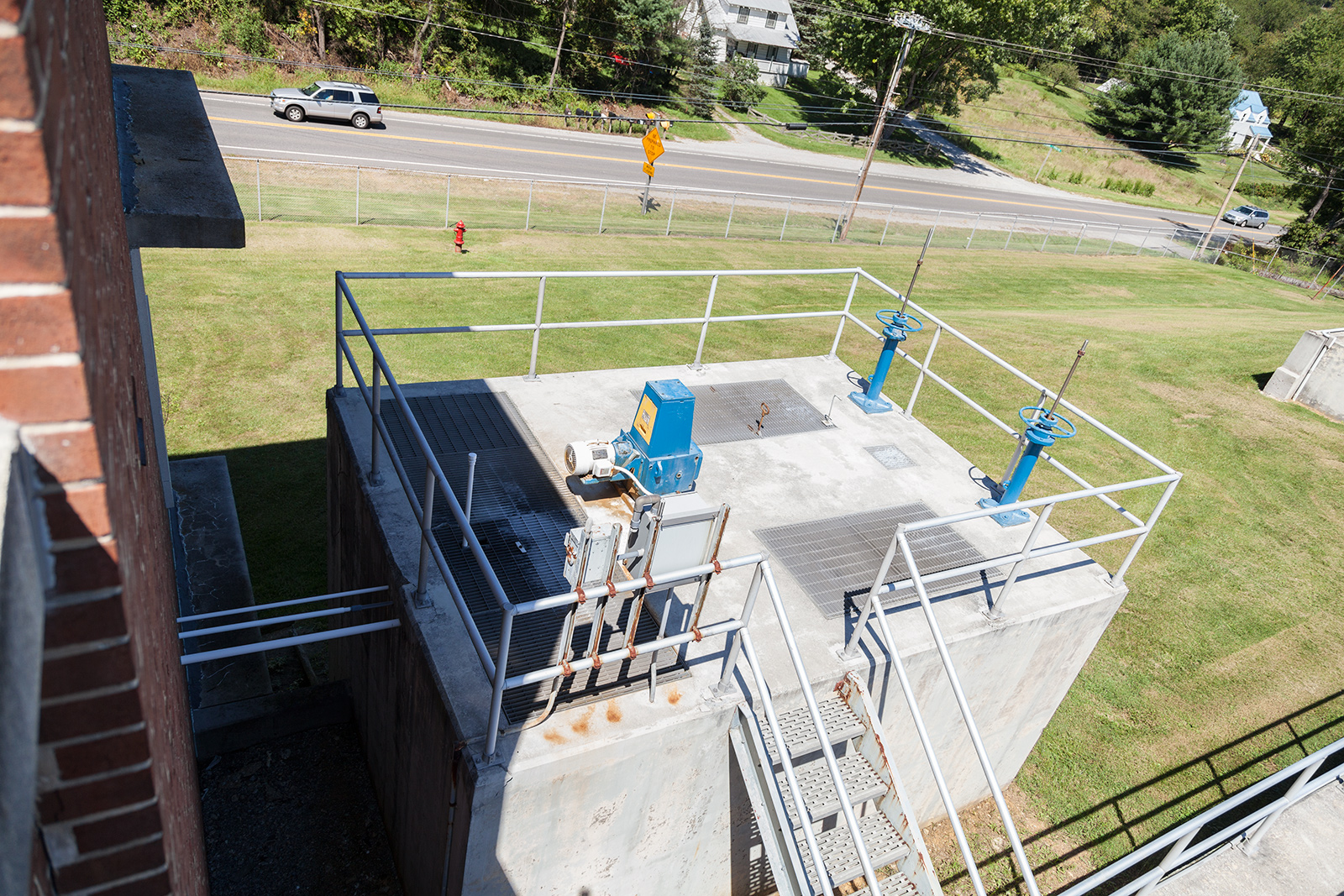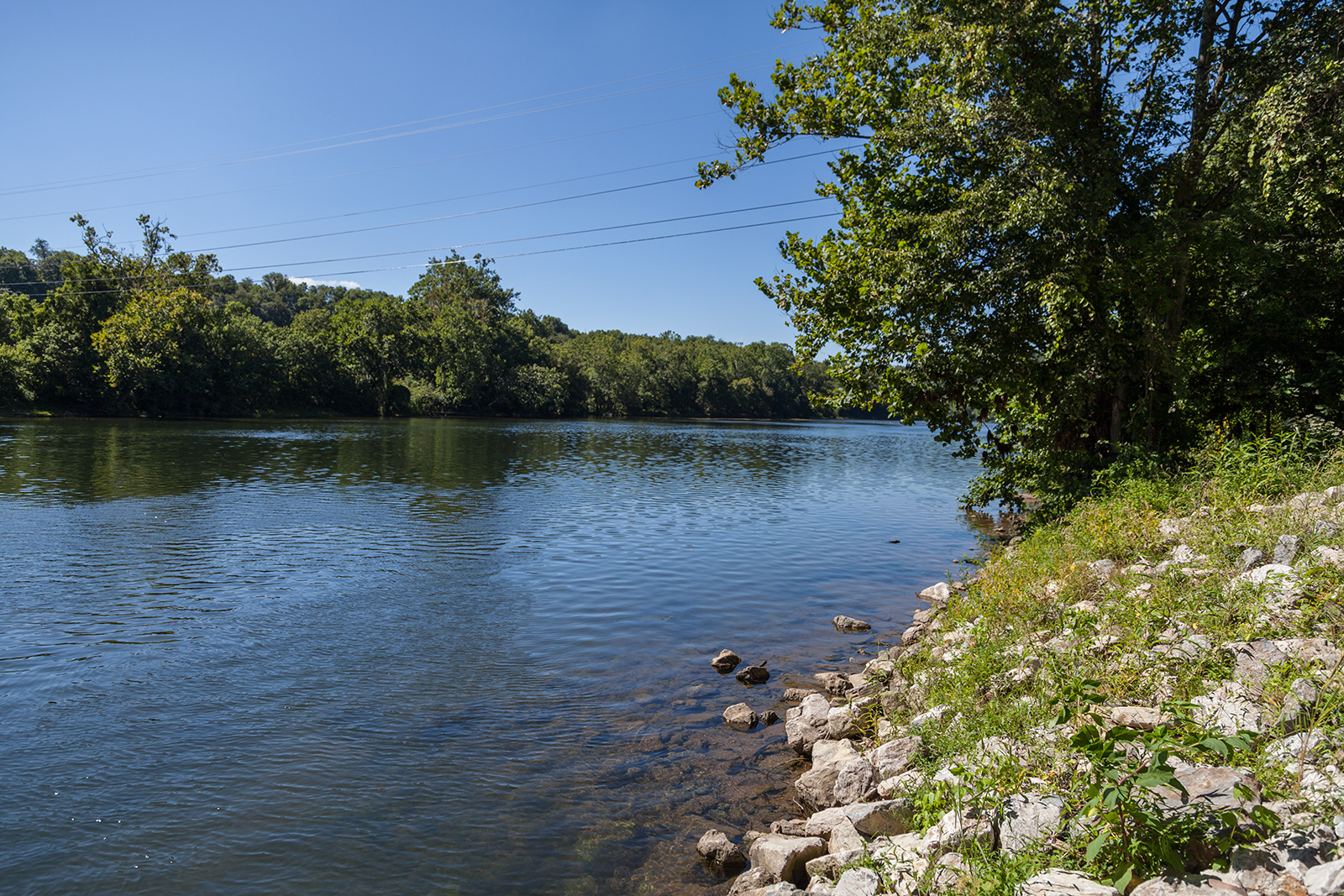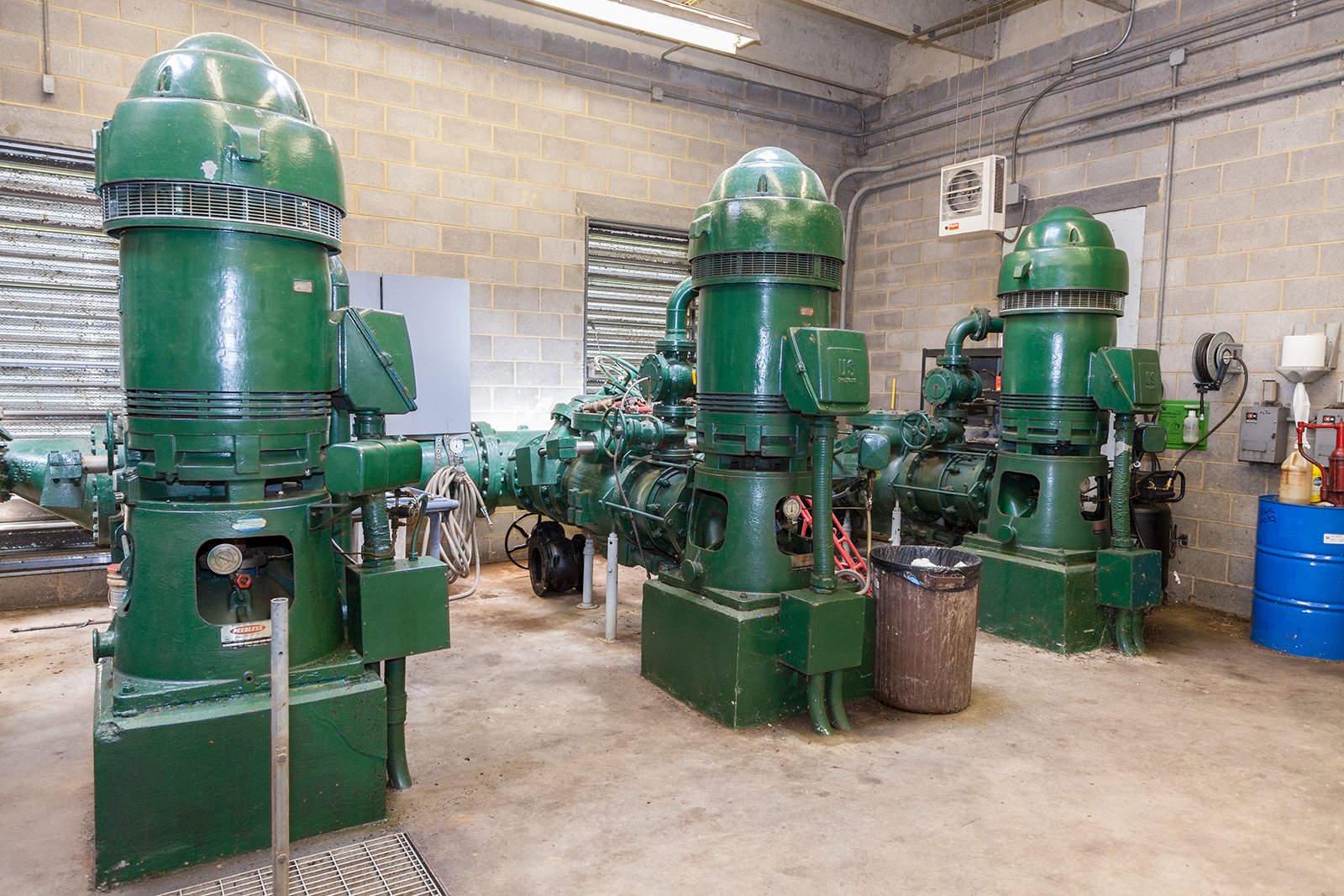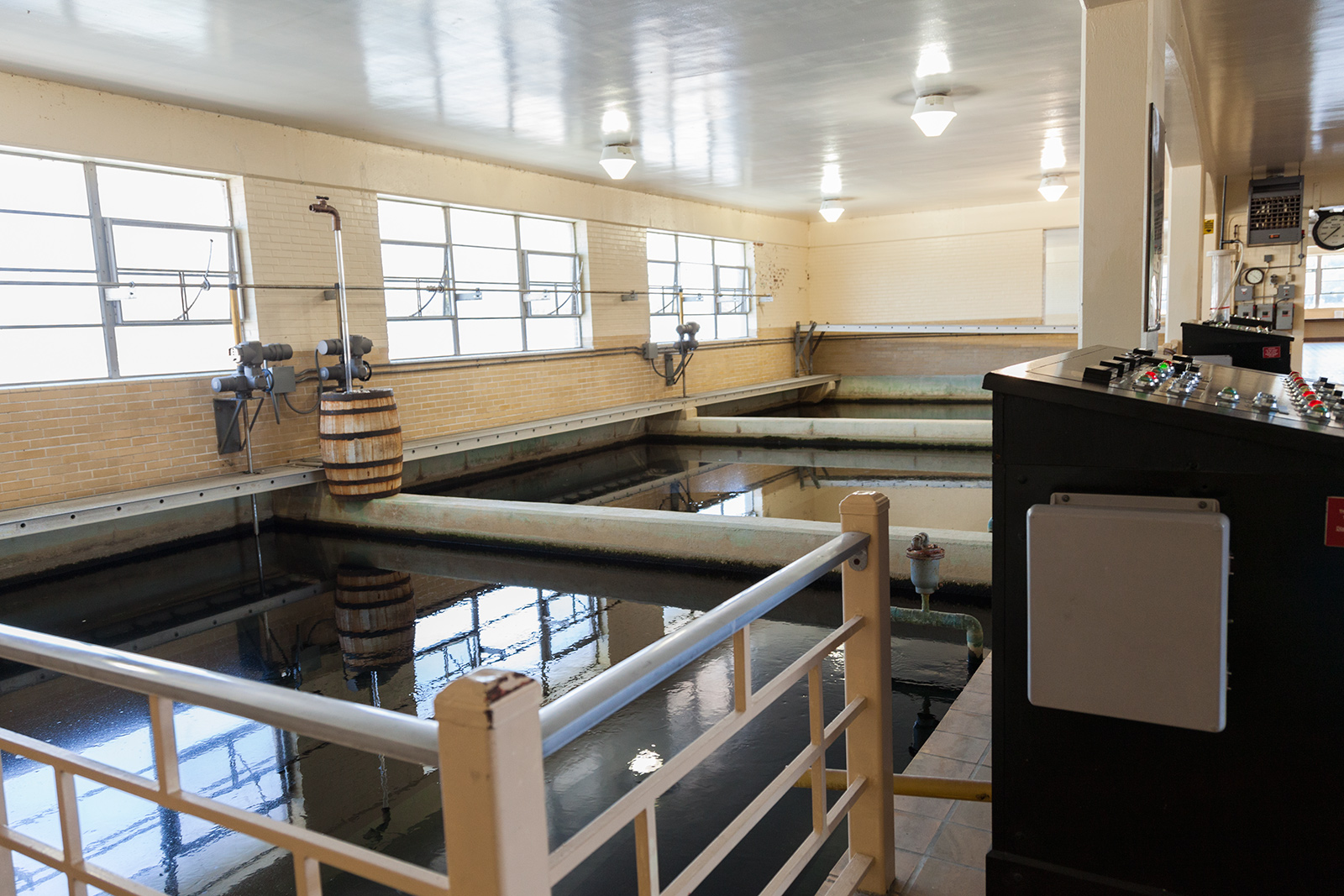Water Source
Raw Water Pumping Station
The Authority’s source for water is the New River.
Since the treatment plant is located approximately two miles from the river, the water taken from the river is pumped to the treatment plant. The Authority has two pumping station that can operate separately or in conjunction with each other to pump water to the treatment plant.
Treatment Process
The NRV Regional Water Authority treats its water utilizing what is defined as conventional treatment process. Conventional treatment consists of the following unit processes: flash mixing, coagulation-flocculation, sedimentation and filtration.
There are many different types of coagulant chemicals that can treat water. However, depending on source water quality characteristics, certain coagulants work better on certain types of water. Based on water quality characteristics for the Authority’s source water, poly aluminum chloride is the coagulant utilized.
Flash Mixing
Poly aluminum chloride and fluoride are added to the flash mixer for mixing. In the flash mixer, water is in the chamber for less than a minute to allow the chemicals to mix with the water before it is sent to the coagulation-flocculation process.
 Flash Mixing Chamber[/caption]
Flash Mixing Chamber[/caption]
Coagulation-Flocculation
The coagulant poly aluminum chloride that is added to the water and mixed in the flash mixer is sent to the flocculation chambers. The coagulation process is the process of the poly aluminum chloride agglomerating (or collecting to form a mass of) particles in the water to form floc. The floc is the precipitate or solid that forms to settle or be filtered from the water.
The Authority utilizes a two-stage tapered coagulation-flocculation process. In a two-stage coagulation-flocculation process, the coagulant is mixed with the water at a higher rate to form a small dense floc or what is typically called a “pinhead” floc. The floc in this stage is essentially the size of a head on a stick pin. The small or “pinhead” floc moves to the second flocculation chamber where the mixing is slowed up to allow the floc to form a larger, less dense layer around the center. By the time the floc leaves the second flocculation chamber, the floc are larger particulates suspended in water.
Sedimentation
Water that leaves the flocculation chambers is split and enters into the sedimentation basins where the floc settles out of the water. The sedimentation basins are large, long rectangular basins that allow the water to be held in the basin to enable the floc to settle. Large, dense floc settle out upon first entering the sedimentation basin while smaller, less dense floc take more time to settle out of the water and do so as it moves closer towards the end of the sedimentation basin. The clarified water from the sedimentation basin passes over a weir to the filters.
 Sedimentation Basins[/caption]
Sedimentation Basins[/caption]
Filtration
Clarified water that passes over the weir from the sedimentation basins enters the filtration gallery. The water is split evenly among the filters. The filters are dual media filters with a layer of anthracite coal on top of a layer of fine sand. Below the sand are two layers of stone. The first layer below the sand is a layer of smaller sized stone followed by a layer of coarse gravel on the bottom. Water from the sedimentation basins flows from the top to the bottom of the filter removing any remaining floc that maybe suspended in the water as well as any algae, suspended precipitates and/or metallic ions (iron and manganese).
Post Filtration/Disinfection
Following filtration, caustic soda and chlorine are added to the water. Caustic soda is added to raise the pH of the water to a neutral level. The chlorine is added to the filtered water prior to entering a clearwell where the chlorine is in contact with the filtered water for a length of time (commonly called chlorine contact time). The chlorine destroys pathogenic bacteria and is essential to prevent the spread of waterborne disease.
Following disinfection, a small amount of ammonia is added to the disinfected water to react with the chlorine to form chloramines (or combined chlorine). This is called the chloramination process which provides a long lasting disinfectant in the distribution system to provide safe, disinfected water to the outermost parts of the regional distribution system.
Just before the water leaves the treatment plant and enters the distribution system, zinc orthophosphate is added at a very small dose to help reduce the corrosion rate of the pipes out in the system.



